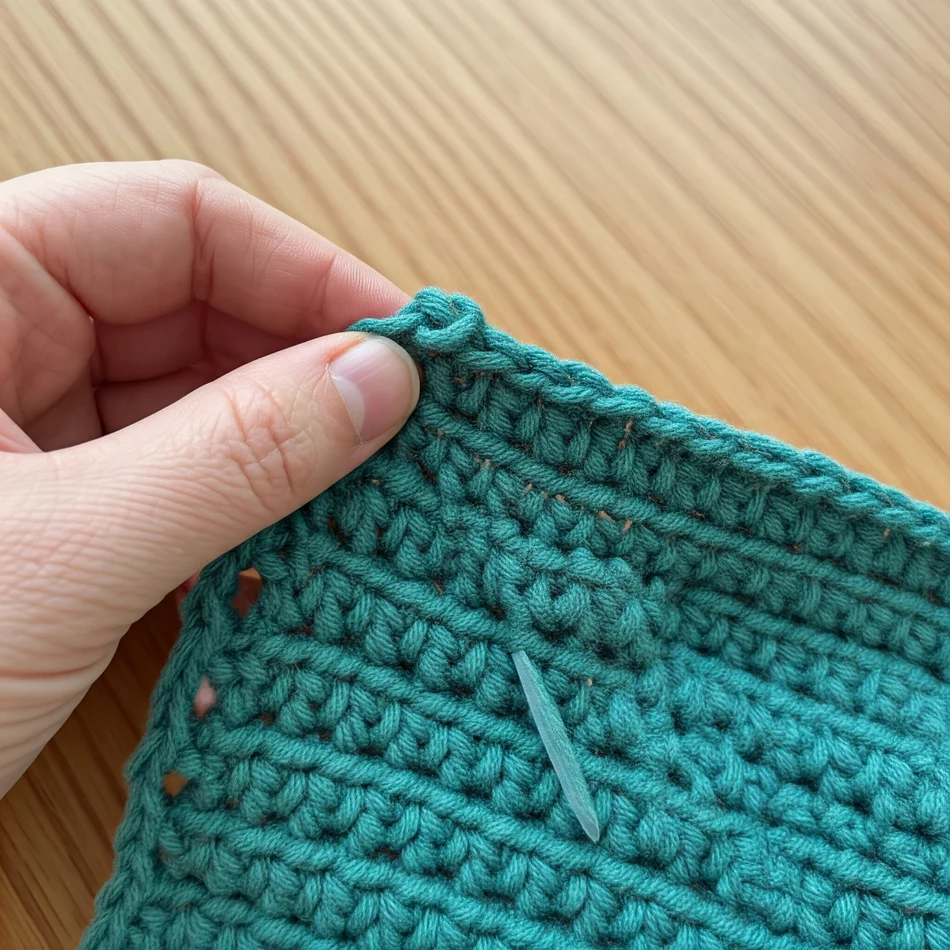Crocheting-a-fine-hobby, and a very invigorating one indeed, needs one to learn how to do practically everything, especially decreasing stitches, to create perfectly shaped things. No matter one’s working on a sweater, a hat, or an amigurumi, decreasing in a crochet works with a smooth curve and tapered edge as one would want. Let me show you how to decrease in crocheting with step-wise instructions in this guide.
Decreasing In Crocheting What Does It Mean?
Decreasing an operation or process along which you will decrease the number of stitches in your work is called “decreasing.” Decreasing stitches is often called making shapings such as when you close a hat or when the sweater is made narrower by it. The major advantage of a decrease is that it can adjust the same to make the size and fitting of your crochet work.
Different Ways of Decreasing in Crocheting :
There are several ways that crochet can decrease. Recognize the most common ones.

1. Single Crochet Decrease (sc2tog) :
One of the simpler and popular methods of decreasing will be less crochet. Here is how to do it:
Insert your hook into the first stitch.
Without completing the stitch, insert your hook into the next stitch.
Yarn over and pull through both stitches (you will have three loops on your hook).
Yarn over again and pull through the three loops.
With this technique, help decrease one of your stitches, and you will begin to see a slope in your work which is very good for shaping.
2. Double Crochet Decrease (dc2tog) :
This is a double crochet decrease if you are working in double crochet stitches and want to decrease them. Here is how it works:
Yarn over and insert your hook into the first stitch. Yarn over once more, and pull it through: you should now have three loops on your hook. Yarn over one more time and insert your hook into the following stitch.
Yarn over again and pull through; now you have four loops on your hook. Yarn over and pull through all four loops. This method results in a much smoother, more gradual decrease than the sc2tog, making it excellent for projects that require a finer finish.
3. Slip Stitch Decrease (sl st2tog) :
The slip stitch decrease is another technique that can help you decrease stitch counts. It is more often used whenever you want to get a quick decrease but not affect the height of your stitches. Here is how: Insert your hook into the first stitch, insert your hook into the next stitch, yarn over, and pull through both stitches… all in one motion. This creates a very subtle decrease, and it can be handy if you want the work not to get too tight or bulky.

Tips for Decreasing in Crocheting :
Pay Attention to Tension :
Tension is an important consideration when decreasing. Be sure the stitches are even and that the decrease has not made tight spots that would distort the outlying shapes of the project. If necessary, use a bigger hook.
Count Your Stitches :
Keep that count of stitches, especially when decreasing. Losing that could result in uneven shapes or an unevenly shaped project. Regularly count your stitches just to check that you’re still on track.
Practice Before You Begin Your Project :
If you are new to the concept of decreasing, practice on a small swatch before you start your actual project. Build the confidence and become accustomed to the techniques.
Why Is Decrease Necessary for Crochet Projects?
Decreasing is an essential technique in crochet creating shape to your projects, bringing them to life-whether toys, garments, or accessories. Usually, decreases put structure and dimension in the project. Crochet without decrease appears unable to attain a flat nature, but instead it looks odd and misshapen.
Decrease for Amigurumi :
In the case of amigurumi, the decrease is important for the molding of the body, head, and limbs of dolls. Most of the times, single crochet decrease is used to decrease the number of the stitches and close up the pieces.
Decreasing for Garments :
In the same way, for garments such as sweaters and cardigans, the decreases shape the waist, shoulders, and sleeves. Commonly for these, it is dc2tog, meaning double crochet decrease, for making these nice gradual comfortable shapes.
Conclusion :
Learning about how to decrease in crocheting is what it requires to have well-formed projects; whether single or double crochet stitches, learned to decrease now will move you to another level in crochet. With what is shared in this article, you will be equipped to handle any crochet project that requires a decrease.
Now that you have known the basic things, practice! Begin with a small one, a hat or even a toy, and shape it using those techniques. Other people will also get to see what you are doing, and then share all of that with them. Enjoy!
FAQs :
How do I know when to decrease in crochet?
Decreases are usually done at specific points in a pattern to create shaping. Follow the pattern’s instructions or decrease at regular intervals for projects like hats or amigurumi.
Can I decrease in any stitch?
Yes, you can decrease in any stitch, but the method will differ depending on whether you’re using single crochet, double crochet, or slip stitches. The techniques outlined here are the most common.
Why do my decreases look sloppy?
If your decreases look uneven or sloppy, try adjusting your tension. Also, be sure to use the correct stitch count and technique for each decrease.

